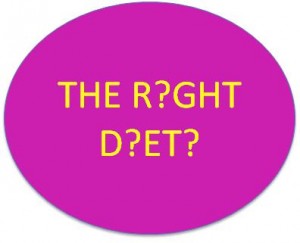 How is this for irony? In 2009, Americans spent over $60 billion to lose weight. They also have the highest health-care expenditure of the developed nations. Yet, it is one of the unhealthiest with one-third of U.S. adults reported as being obese, landing at the top of the list of countries with the highest obesity rates in the world. This is not just a problem south of our borders. In Canada, one in four adults are obese and one-third of those between ages 5-17 are either overweight or obese.
How is this for irony? In 2009, Americans spent over $60 billion to lose weight. They also have the highest health-care expenditure of the developed nations. Yet, it is one of the unhealthiest with one-third of U.S. adults reported as being obese, landing at the top of the list of countries with the highest obesity rates in the world. This is not just a problem south of our borders. In Canada, one in four adults are obese and one-third of those between ages 5-17 are either overweight or obese.
The question may arise, “Clearly, we have a problem that is not going away and is on the rise. So what is the right approach and what is the right diet?”
Allow me a little digression before continuing that dialogue. A closer look at the ‘dieting’ phenomenon and its journey may help shed some light on this quandary we find ourselves in.
Ali Luke in The Diet Blog, writes, “Historians trace the origins of a modern conception of dieting to two 19th century figures: Rev. Sylvester Graham (1795-1851), a New Jersey preacher, and William Banting (1797 – 1878), a London undertaker.”
Interesting facts: Reverend Graham, the inventor of Graham bread and crackers believed that chemical additives in food (becoming a popular practice during the Industrial Revolution) were unhealthy. To help control his obesity, William Banting was prescribed a low-refined carb, high protein and vegetables diet by a physician.
Obesity was not a problem faced by the majority of the world’s population, which was in fact struggling to put food on the table before and during the Industrial Revolution. Even though starvation was less of a worry in the United States then, it was far from becoming a diet-obsessed nation.
After the Industrial Revolution came cars, women entering the work force and packaged foods. With easy transportation and food preparation coupled with busy schedules, little time was left for exercise and cooking fresh, whole foods. Calorie consumption either stayed the same or increased while energy expenditure decreased. It doesn’t take a scientist or a nutritionist to figure out what went askew. This lifestyle has resulted in heart disease becoming the first cause of death in the U.S. and second leading reason in Canada, one that can be prevented or managed with the right diet and exercise.
We find ourselves back to facing the question of, ‘what is the right diet to follow?’
The answer is a simple and obvious one – there isn’t a one right diet for everyone that works all the time. But there is a right diet for you. Which one that is, requires some observation on your part.
Your dietary choices are in your own hands:
Let us begin with changing our attitude to the word ‘diet’. For many, it means a restricted menu, one that is imposed by an outside authority and limits self-freedom and choice. However, you can replace that association with an understanding that your daily diet means those foods you habitually eat.
Once you decide to regain control of your health, the foods you habitually eat can be those that contribute to your well-being and this now becomes your own self-guided diet.
What are the right foods for you?
Turn your gaze inwards to focus on your own symptoms, patterns and needs. Spend some time investigating how you are feeling, especially after eating certain foods or at particular times of the day. This exercise will give you an insight into what your unique requirements and triggers are, if you have any food allergies or sensitivities and help answer the following questions:
- Which foods disagree with me?
- Are my energy levels low most of the time?
- Which foods make me feel good and provide energy?
- Is lack of time and planning the reason I am not eating well?
- Or is it lack of awareness about what is good for me?
Equipped with these answers and from this place of knowledge and understanding, you can begin to make informed dietary choices that are right for you and will bring lasting results. Some of the benefits of following the right diet for you are weight loss, better digestion, improved mental and physical energy, healthier skin, hair and many more. Not to mention better judgment and self-reliance!
However, if you need support, enlist the help of a holistic nutritionist who does a detailed assessment of your health history. After helping you identify your triggers, food sensitivities or allergies, he or she can design a customized health and meal plan for you based on your lifestyle, health concerns and goals.
4 guidelines to help you find the right diet and stick with it:
Cultivate curiosity:
Bring some childlike interest into discovering which foods agree or disagree with you. Paying attention to what makes you feel good and what doesn’t will be the first step towards making positive and lasting changes to your dietary habits.
Be flexible:
We can get stuck in our habits; perhaps you have been eating the same breakfast for years now? Your willingness to experiment with new foods and cooking methods might be a pleasant surprise for your palette and digestion. So go ahead and try something new – like an oatmeal cereal breakfast instead of a coffee and bagel – and see how good you feel.
Practice patience:
Bringing change to your eating patterns may be frustrating in the beginning. You may wonder if the effort is worth it. It most definitely is. By patiently including the foods that make you feel good and excluding those that don’t, you will be well on your way to designing the perfect diet for yourself.
Practice consistency:
Achieving and maintaining good health is a process, one that requires your ongoing effort. The good news is that a regular practice of healthy eating habits and exercise brings increased mental and physical energy, a healthier body, better sleep and moods – the many rewards for your efforts.
Remember, when you’re in balance, life is good!
Do you agree with me that there is no one right diet that works for everyone and that we need to listen to our inner expert to find what’s right for us? If yes, please help me spread this information by sharing the article on facebook and twitter using the buttons below or emailing it to a friend. So many people struggle with this diet quest and I want to help free them from the chase. Also, I would love to hear from you. Please leave me a comment below to let me know what you thought.
Sources:
OECD Health Division (October 29, 2012). Retrieved 2013-01-23.
Cynthia L. Ogden, Ph.D.; Margaret D. Carroll, M.S.P.H.; Brian K. Kit, M.D., M.P.H.; and Katherine M. Flegal, Ph.D. Prevalence of Obesity in the United States, 2009–2010
Public Health Agency of Canada and Canadian Institute of Health Information, ‘Obesity in Canada’. June 2011.
Fogel, Robert. W. (2004). The Escape from Hunger and Premature Death, 1700-2100. London: Cambridge University Press.


